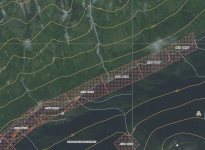ProspectorALEX
Sr. Member
- Apr 14, 2013
- 292
- 184
- Detector(s) used
- Whites GMT E-series
- Primary Interest:
- Prospecting
So, my dad and I are finally ready to stake a couple placer claims. However, I have found different requirements from the state and federal levels. If the claim is on FS land, do you still have to follow state policy for marking the claim posts? Secondly, I have read that you should file claims based on the Township, range, section and quarter-section if possible, but the claims we want to make wouldn't be efficient if we were to stake them that way because the creek isn't a north-south or east-west flowing creek. So, is there another way to stake the claim without using that system? I have been reading other threads on staking claims, but I haven't found any way to stake claims without using township, range, etc. Thankyou for any help! Also, there are several claims in the area that are diagonal on the creek, I just don't know how to file so they could be like them.
Amazon Forum Fav 👍
Last edited:
Upvote
0








